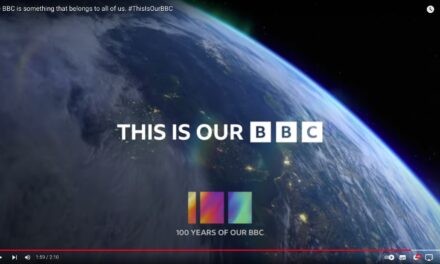Forgive me for returning to Broadchurch so soon after John Ellis’s excellent account, written just as it finished. But I thought it was worth commenting on some of its other (largely textual) features before it slips away from view until the second series. Much of the commentary on Broadchurch has focused on what made it distinctive – the new things or at least the things that were new for an ITV mainstream drama. But what struck me was that part of its newness was rooted in a return to some older things which used to be quite common in mainstream television drama. The first, of course, was the slow feel engendered by the weekly episode. This is still common with certain kinds of adaptations but contemporary drama is now often stripped across a number of nights (as the competing Mayday (2013 – ) was) or, like the Danish dramas on BBC4, shown in two or more episodes in a night. This enforcement of the old-fashioned weekly wait was apparently a deliberate decision in order to allow the suspense to build slowly and this was greatly helped by the lack of a ‘Next week on Broadchurch’ montage at the end of each episode. This infuriating and patronizing invitation to keep viewing was deliberately left off and for me this was a sign that this was a programme which was willing to place faith in its viewers.
I hadn’t seen The Killing 1 (2007) but those who had, including a number of television critics, seemed initially, at least, a bit jaded in their response to Broadchurch and commented that the focus on one murder and its implications owed much to the Danish serial. If that was the case I was glad to have missed that bit of intertextuality though I found it hard to imagine quite how the sunlit and spacious Broadchurch could have its origins in the dark and claustrophobic Nordic detective dramas (on page or screen). For me, though, it seemed more like an old-fashioned detective story in which there are a number of suspects who are in turn explored and exonerated, often with explanations of their innocence provided by elaborate backstories. Admittedly, Agatha Christie often resorted to the odd additional murder but the basic storytelling device surely predates The Killing. But it does feel strikingly low-key in a television landscape in which even soap operas, formerly mocked for the slow ordinariness of their storytelling, feel the need to hype up the drama with the murders, assaults and arson which are now their staple fare.
But what was so good about Broadchurch, and owed much to the space it gave itself to unwind, was that it took this old-fashioned detective device and made an extraordinarily humane drama out of it. Modern British police drama is obsessed with pedophilia so opening with the murder of a child, Danny, was familiar ground but here we were prevented from making quick, easy judgments. As the serial unfolded, we learnt that the parents of the murdered child, Beth and Mark, had themselves been in a sexual relationship when both were underage, a fact that rather undermined Mark’s objections to his 15 year old daughter’s relationship with her older boyfriend. More telling was the story of the newsagent, Jack Marshall, who committed suicide when he was put in the frame for the murder because he had a conviction for underage sex with a girl whom he had subsequently married. And he admitted that he wanted to work with young boys in the Sea Brigade – attracted to their enthusiasm, their bodies, their aliveness – because he wanted to be reminded of his own young son, killed in a car crash. If this was a kind of pedophilia – and we were not invited to judge it as such – then it was bred from a father’s longing for physical contact with his son that could never be assuaged. And so to the murderer himself who was as confused as anyone about what he had done but could only protest – even to the dead child’s father – that he had been in love with Danny. It was no less chilling for being so ordinary a claim.
The complex handling of this central issue was made possible because Broadchurch eschewed the moral certainties which so often accompany the melodramatic handling of such stories in soaps and other popular television dramas. I enjoy melodramatic storytelling but its dominance has robbed us of some of the pleasures of muddled ordinariness. In Broadchurch, it was not just that characters were revealed to have back stories that explained their actions. It was that very few of the characters were consistently good or bad and they lived their emotional lives out in a recognizable muddle. Within families, husbands and wives, parents and children, quarreled badly, spoke harshly but then found a way back to their usual domestic rhythms; the boorish father, Mark, having summoned up the vigilante gang to set on Marshall, instead listened quietly, despairingly, to the intended victim; the grieving family found pleasure in playing games in the amusement arcade. It could work the other way; Beth, whose grief drove her in all kinds of directions as if testing the roles in which she could now live, was finally implacable with her friend, Ellie, asking ‘How could you not know?’ It was this sense of humanity grounded in everyday life that allowed Broadchurch to get away with its more melodramatic moments of confrontation and resolution, particularly at the end. Mark was implausibly let into the police cells to confront his child’s murderer (and perhaps melodrama was felt to be needed here to make sure that a clear moral line was finally drawn) while Beth found some comfort in the communal fires lit on the cliffs around the town to mark Danny’s burial.
Which brings us the location and the landscape. It was reported that the writer Chris Chibnall who had been working in the US on Camelot proposed Broadchurch as a project which would be “very cinematic, very image driven, in which it wouldn’t just be about the dialogue”. This sounds very much in line with the contemporary vogue for describing good television drama as cinema – until you get to the rest of the quotation and learn that he “wanted to make the landscape a real character which is frankly just nicked from Thomas Hardy.” So, yes, some of the lighting and filming did look new but landscape, sometimes filmed with great persistence and difficulty, has long been a feature of British fiction, even on television.

There’s more to say about, for instance, the acting and I agree with John Ellis that part of its pleasure lies in seeing actors whom we recognize taking on different roles and almost forcing an attention to performance. This is a familiar pleasure on television though it can be threatened by over-exposure when an actor becomes popular. For me in Broadchurch, this happened with David Tennant, whose quirks, oddities, mysterious back story and physical frailties seemed too tied to other performances. But Olivia Coleman as DS Ellie Miller and Jodie Whittaker as the mother Beth stood out in different ways. Coleman had a role which deepened and developed as Ellie explored the demands of her professional life and found the security of her home challenged by the investigation; Coleman’s restrained and nuanced performance was compelling.

In a way, the role of the grieving mother was actually more tricky. It started at a very high emotional point when Danny’s murder is discovered and then took off into a variety of directions; Whittaker could certainly do the outbursts of grief and anger but she also was exceptional in scenes where she controlled herself in order to seek some understanding or knowledge, from the psychic, for instance, or the mother of another murdered child.

I’ll finish a comment on the audience response on Twitter. Let’s not forget that Twitter talk has roots in earlier kinds of conversations, not just in the home as John suggests but in other kinds of spaces and using older technologies. Of course, ITV is delighted to have aroused such a response in these media-savvy watchers, perhaps a touch up the social scale than its usual demographic. But it is worth noting that this is not a new phenomenon though it is made easier (for some audiences) by social media technologies. There’s been lots of research into talk about television – remember Dorothy Hobson on women in the workplace and Mary Ellen Brown on women talking to friends and family on the telephone about soaps. Using Twitter perhaps opens up this pleasure to new users (particularly youngish, middle-class men) and that of course makes it newsworthy and respectable, but for many of us it has long been one of the pleasures of ordinary television.
PS The second series of Scott and Bailey also on ITV (2011 – ) has been great as well.
Christine Geraghty is an Honorary Professorial Fellow at the University of Glasgow and an Honorary Research Fellow at Goldsmiths, University of London. Her publications on television include a contribution to the 1981 BFI monograph on Coronation Street; Women and Soap Opera (Polity, 1991); and My Beautiful Laundrette (I B Taurus, 2004. Her BFI TV Classic on Bleak House (2005) was published in October 2012. She is on the editorial board of the Journal of British Cinema and Television and sits on the advisory boards of a number of journals, including Screen.





